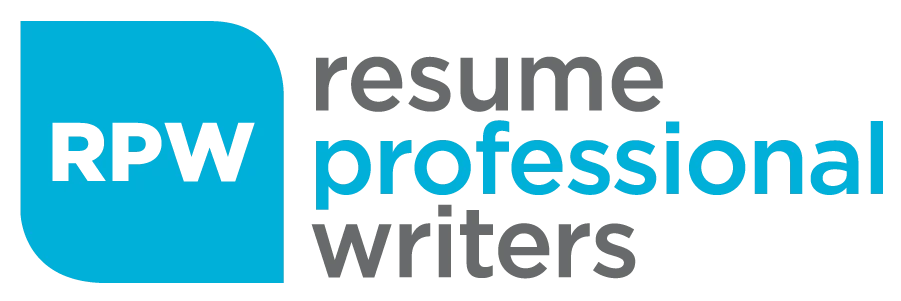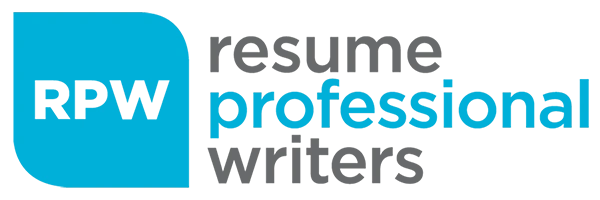The “CV vs resume” discussion has always been a topic of debate among many job hopefuls. As a job seeker and a professional, you might have also encountered the challenge of knowing how these documents differ and when to use both a CV and a resume. There are key differences between a CV and a resume, such as length, content, and regional variations, which are important to understand for different job markets or career paths. While both documents serve as crucial tools for presenting one’s professional background and qualifications to hiring manager, they differ significantly in terms of length, content, and purpose.
The decision between writing a CV and a resume becomes a pivotal point for individuals navigating the competitive job market, and understanding the nuances of each document is essential for crafting a compelling application. If you’re in need of a guide to determine when to use each document, read on to find out their differences and know which one you should create.
What is a CV vs Resume?
In detail, how do these two documents differ? Here’s an overview of how each is defined.
What is a Curriculum Vitae (CV)?
A curriculum vitae, commonly referred to as a CV or curricula vitae, is an extensive document that offers a comprehensive overview of an individual’s academic and professional background. It includes detailed descriptions of coursework, research, and publications. Unlike a resume, which is typically tailored for specific job applications, a CV is more detailed and includes information such as academic achievements, research experience, publications, conferences attended, and a thorough employment history. Commonly, CVs are utilized in academic, research, and international job contexts, where a thorough exploration of an individual’s qualifications and accomplishments is expected.
What is a Resume?
In contrast to a CV, a resume is a succinct document tailored for specific job applications. It typically focuses on key skills, relevant work experience, and notable achievements directly applicable to the targeted position. Its concise nature allows recruiters to quickly assess a candidate’s suitability for a particular role. Resumes are the preferred choice in industries where brevity and immediate relevance to the job at hand are crucial. Crafting an effective resume requires strategic selection of information, emphasizing one’s most pertinent qualifications to make a compelling case for candidacy.

CV vs Resume Difference
CV vs Resume Key Differences
Each of these job search and career tools presents unique advantages and purposes. The following table outlines the key differentiators between a CV and a resume for easier reference, offering clarity on how to maximize impact in the competitive job market.
| FEATURE | CV | RESUME |
|---|---|---|
| Length | Generally longer and can span multiple pages | Concise, typically limited to one or two pages |
| Purpose | Comprehensive overview of academic and professional background | Tailored for specific job applications |
| Content | Includes detailed academic history, research, publications, and more detailed descriptions of achievements | Focuses on relevant skills, work experience, and achievements |
| Target Audience | Commonly used in academia, research, and international contexts | Widely accepted in most industries and job sectors |
| Flexibility | Less flexible due to the comprehensive nature | Highly adaptable, can be tailored for each job application |
| Emphasis on Education | Strong emphasis on academic qualifications and achievements | Highlights relevant academic background and skills |
| Professional Experiences | Typically includes a detailed employment history | Emphasizes relevant work experience and professional achievements |
| Industries | Commonly used in academia, research, and certain international contexts | Preferred in business, technology, and most other industries |
| International Use | Widely accepted in international job markets | Commonly used but may require regional customization |
| Frequency of Updates | Updated less frequently, mainly when significant changes occur | Requires frequent updates to align with evolving career goals |
Content and Structure
Understanding the content and structure of a curriculum vitae (CV) and a resume is crucial for job seekers who want to present their qualifications effectively. Each document serves a unique purpose and requires a distinct approach to highlighting academic and professional accomplishments. Knowing what to include and how to organize your information can create a compelling narrative that resonates with hiring managers.
Key Elements of a Curriculum Vitae (CV)
A Curriculum Vitae (CV) is a comprehensive document that highlights an individual’s academic and professional accomplishments. When creating a CV, it is essential to include the following key elements:
- Contact Information: Start with your name, email address, phone number, and LinkedIn profile (if applicable). This ensures that hiring managers can easily reach you.
- Professional Summary: Provide a brief overview of your academic and professional background, emphasizing your relevant skills and experience. This section sets the tone for the rest of your CV.
- Education: Detail your academic background, including degrees earned, institutions attended, and relevant coursework. Highlight any honors or awards received.
- Research Experience: Describe your research experience, including research positions held, projects worked on, and any relevant skills or techniques used. This is particularly important for academic and research roles.
- Professional Experience: List your professional experience in reverse chronological order, including job title, company, dates of employment, and a brief description of job responsibilities and accomplishments.
- Academic Positions: Include any academic positions held, such as teaching experience, research appointments, and relevant administrative roles.
- Publications: Provide a list of your publications, including books, articles, and conference proceedings. This showcases your contributions to your field.
- Presentations: List any presentations given, including conference presentations, seminars, and workshops. This demonstrates your engagement with the academic community.
- Awards and Honors: Highlight any awards or honors received, such as academic awards, research grants, and professional recognition.
- Professional Memberships: Include memberships in professional organizations, academic societies, research organizations, and industry associations.
When creating a CV, it is essential to tailor it to the specific position you are applying for, highlighting the skills and experience that align with the job requirements. Use clear and concise language, and use bullet points and white space to make the document easy to read.
In addition to these key elements, a CV may also include other sections, such as:
- Teaching Experience: Describe your teaching experience, including courses taught, teaching methods used, and any relevant teaching awards or recognition.
- Service: Detail any service activities, including committee work, volunteer work, and community service.
- Skills: List any relevant skills, including language proficiency, computer programming skills, and laboratory techniques.
- References: Provide a list of professional references, including name, title, institution, and contact information.
Remember, the key to a successful CV is to showcase your academic and professional accomplishments in a clear and concise manner, highlighting your relevant skills and experience.
When to Use a CV vs Resume
Knowing when to use a CV vs resume is crucial in presenting oneself effectively during the job application process. The decision lies on various factors, including the nature of the job, industry standards, and the level of detail required by potential employers. That said, heed the following considerations for both CVs and resumes to help you make informed choices based on your unique professional circumstances.
When to Use a CV
- Ideal for academic and research roles, where a detailed account of educational background, publications, conferences, and research experience is essential
- Preferred document in many international job markets, especially in Europe
- Best fit for individuals with length and varied professional history
- Required document when seeking funding opportunities, grants, or fellowships
- Used in applying for jobs and roles in specialized fields (e.g., medicine, science, and academia)
- Perfect for individuals with a strong emphasis on research and publications
- Highly tailored for jobs within government agencies or international organizations that demand a comprehensive background assessment
When to Use a Resume
- Best when applying for roles in business and corporate settings
- Useful for making job applications more targeted
- Ideal for individuals entering the job market or seeking entry-level positions
- Convenient job search tools to be presented at job fairs or networking events
- Recommended tool to help career shifters transition between roles or industries
- Preferred document by online job portals and applicant tracking systems
- Highlights feats and skills useful for professions like consulting or freelancing

How to Write a CV vs Resume
Crafting an effective CV or resume is a crucial step in presenting one’s professional narrative to potential employers. While both documents share commonalities in terms of structure and content, their purposes require distinct approaches. Here are some practical tips on how to write a compelling CV and a targeted resume so you can best showcase your qualifications with impact:
How to Write a Curriculum Vitae (CV) with Academic and Professional Accomplishments
- Begin your CV with essential personal information, including your full name, contact details, and a professional summary highlighting your career objectives and key qualifications.
- Detail your educational background, including degrees earned, institutions attended, and graduation dates. Include any honors, awards, or relevant coursework.
- For those in academic or research fields, prominently feature your research endeavors, publications, and conference presentations. Provide a clear breakdown of your contributions to your field.
- Present a thorough employment history, emphasizing your roles, responsibilities, and accomplishments in each position. Use action verbs to convey your contributions effectively.
- If applicable, showcase memberships in professional organizations and relevant certifications. This adds credibility and demonstrates ongoing professional development.
- Customize your CV for each application, aligning it with the specific requirements of the job. Make sure to prioritize information that showcases your suitability for the position.
- Structure your CV in a clear, organized manner. Use headings and subheadings to make sections distinct, making it easy for the reader to navigate your comprehensive document.
How to Write a Resume with Relevant Skills
- Go for a clean and professional layout by using a legible font, appropriate spacing, and bullet points to enhance readability.
- Start your resume with a concise, professional summary that encapsulates your career goals, key skills, and what makes you a standout candidate.
- Tailor your work experience section to the specific job you’re applying for by highlighting achievements, responsibilities, and skills directly relevant to the role.
- Create a dedicated section to showcase your key skills using bullet points to make it easy for recruiters to identify your strengths.
- Whenever possible, use quantifiable metrics to illustrate your accomplishments, adding substance to your resume and providing tangible evidence of your impact.
- Customize your resume for each job application by emphasizing the most relevant qualifications.
- Provide concise details about your educational background and relevant certifications., focusing on degrees and academic credentials that enhance your qualifications for the targeted role.

How Do Curriculum Vitae and Resume Differ from Each Other? 3
Resume and Curriculum Vitae Samples
To help you further decide on which document best fits your needs, you might need to see some actual examples of how they’re crafted and formatted. Browse through our expertly written resumes from various sectors and fields, including academia, engineering, and information technology.
Entrust Your CV Writing Needs to Trusted Experts
Understanding the nuances between a curriculum vitae (CV) and a resume is paramount for job seekers navigating the competitive landscape. By embracing the tailored precision of resumes or the comprehensive depth of CVs, job seekers can craft compelling narratives that resonate with employers and pave the way for success in their professional endeavors.
Need more help to fix your job search tools? Let our expert CV writing services help you win your dream job with a stunning copy. With Resume Professional Writers’ team of skilled professionals versed in the art of precision and impact, we can elevate your documents, ensuring they stand out in a competitive job market. Invest in your academic and professional accomplishments and future with the assurance that your CV or resume is meticulously tailored to showcase your strengths and qualifications.
Let our seasoned writers transform your career narrative into a compelling story that will capture employers’ attention. Contact us today to get started!








